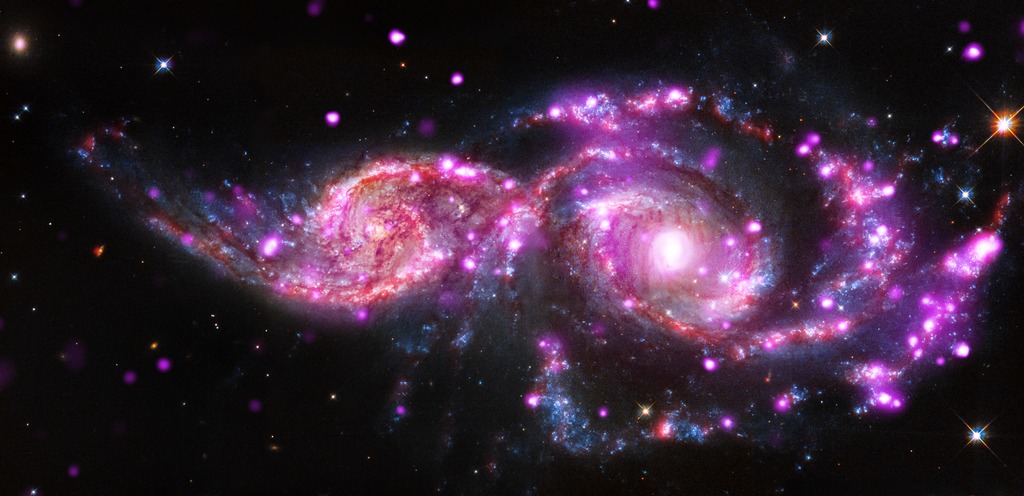
Credit: NASA/CXC/SAO/STScI/JPL-Caltech
Observation • December 12th, 2014 • sig14-030
sig14-030
At this time of year, holiday parties often include festive lights. When galaxies get together, they also may be surrounded by a spectacular light show. That's the case with NGC 2207 and IC 2163, which are located about 130 million light-years from Earth, in the constellation of Canis Major.
This pair of spiral galaxies has been caught in a grazing encounter. NGC 2207 and IC 2163 have hosted three supernova explosions in the past 15 years and have produced one of the most bountiful collections of super-bright X-ray lights known. These special objects -- known as "ultraluminous X-ray sources" (ULXs) -- have been found using data from NASA's Chandra X-Ray Observatory.
This composite image of NGC 2207 and IC 2163 contains Chandra data in pink, optical-light data from NASA's Hubble Space Telescope visible-light data in blue, white, orange and brown, and infrared data from NASA's Spitzer Space Telescope in red.
About the Object
- Name
- NGC 2207
- Type
- Galaxy > Grouping > Pair
- Galaxy > Activity > Starburst
- Distance
- 130,000,000 Light Years
Color Mapping
| Band | Wavelength | Telescope |
| Infrared | 8.0 µm | Spitzer IRAC |
| Optical | 814 nm | Hubble WFPC2 |
| Optical | 555 nm | Hubble WFPC2 |
| Optical | 439 nm | Hubble WFPC2 |
| X-ray | 1.5 keV | Chandra ACIS |
Astrometrics
- Position (J2000)
- RA =6h 16m 25.2s
- Dec = -21° 22' 30.4"
- Field of View
- 4.8 x 2.3 arcminutes
- Orientation
- North is 12.2° right of vertical



